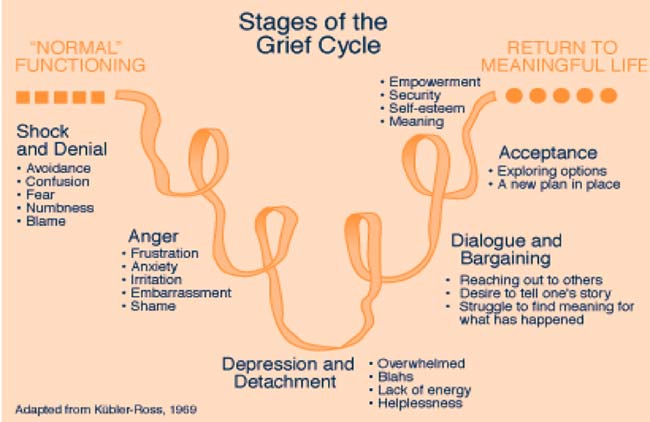Let’s face it. Change is like breathing. If you stop, you die.
So why is it that so many small businesses fail to look at some of the basics when it comes to change in the workplace?
It’s not just small business. I was consulting with senior managers in a large Australian telecommunications company when I heard the statement “I don’t know why they don’t understand, we sent them an e-mail.”

Is there something wrong with this statement?, “We’ve sent an e-mail!”, “We’ve communicated”, “We’ve told them what is happening”.
If you answered ‘No, there’s nothing wrong with that statement” here’s a hint – It’s not communication if you just “send an email”.
Communication is one of the most critical aspects of managing change in the workplace, yet so often I’ve seen it done really, really poorly.
Change, in theory, is simple. Tell them what you are going to tell them. Tell them. Tell them what you’ve told them…then tell them again!!!
Many of the methods to manage change you will find when you do an online search will be a variation of the Kotter 8 Steps. In terms of a “Process” there are a couple of simple strategies I’ve used to effectively manage significant (and less significant) workplace change.
Involve your People
Often I find that managers don’t get their people involved because the change is something that is ‘going to happen’ regardless of employee response. It could be that you are struggling to stay in the black, and the only option you feel you have is to cut staff numbers. Redundancies have a huge impact on your people, not just the ones who are made redundant, but also the people who are left behind. I’ve been on both sides of the redundancy line, and it’s hard for all – including most managers.
So why is communication so important? When change occurs, the process people go through has been likened to the five stages of grief (See Stages of Grief Cycle, adapted from Kubler-Ross, 1969).

You have to understand that there is a loss, as with grief, to the way things are done. Loss of productivity. Loss of friendships. Loss of community. You cannot change the way an individual responds to or reacts to staff layoffs, however you can work with them to help move through the issues that will arise through and after the change.
One of the best ways I saw this managed was by a GM who had to make 100 staff redundant. In a group of about 2000 people, it’s still a big number. It was a big call, and in a unionized environment it could have been a catastopic on a number of levels.
My advice was to be honest about the business situation. This honesty went long way with his people. Finances were tight, the business unit was struggling, and after looking at so many alternatives to cut costs, it still came down to the need to reduce the number of staff. It was a case of “if we don’t lose 100 people now, it could be 500 in 12 months”. No sugar coating. No corporate fluffiness. Just the harsh reality that 100 staff would be gone in a month, or 500 in 12 months.
The next thing we did was to arrange several small cross functional groups to talk to about how the changes impact THEM. It was a personal approach, and although the GM was not able to resolve every issue that came up for his people, he did get some really valuable information about the impacts to processes these staff cuts would have – things even he and his managers had not thought of. In addition, although the staff didn’t like the loss of 100 colleagues, they were more supportive of the after-changes (still didn’t like them, but supported the GM none the less). He Involved his people.
Constantly Communicate
Tell them what you are going to tell them.
Tell them.
Tell them what you told them.
Tell them again!
You need to plan what your people need to know, keep the information regular, and put in place ways for your people to feedback to you their concerns. Put together a small team of representatives from across your business to act as advocates for the employees, and advocates for the change. Use the team to test how the messages may be received, what problems could arise, does the information makes sense, and KEEP IT SIMPLE.
Plan for the future
You should have a clear vision of what the future will look like once the change has occurred – BEFORE you announce the change! Your people need to know that you see a better future for the business with the proposed change.
Develop a roadmap (draw it up on some cardboard if you have to) so your people can see what will happen, when it will happen, and where you will be when it’s done. Your roadmap should highlight the milestones that impact the employees. It should be part of your overall communications plan.
In addition, make time to sit with your people about a month after the change, find out how they are coping. Find out what impacts the loss has had to your systems, processes, people, and customers. Get THEIR idea’s on how to move forward WITH you.

Keep the momentum going
Even with the above strategies in place, there is the potential for things to get harder before they get easier. I suggested to an MD that we speak with a number of staff to see how the changes affected their roles. This was a company that had cut two-thirds of their staff (about 600 people).
His response was that “We’ve dealt with the changes, and I don’t want to revisit old ground”.
To me, it sounds like the MD had moved forward and was not willing to hear any bad news. The danger that I see with this response is that on the surface everyone will say how well things are going.
After such a MASSIVE change, people are afraid to raise any issues for fear of being the next one to go. This is the time when small issues are ignored, and can build to become serious problems. If no-one is prepared to ask the uncomfortable questions, when the small things turn to big issues, there will be no understanding of how they got there!
After the change, keep the communication going. Develop a new roadmap. Keep talking to your people.
Now I know that some staff will tell you they are not happy about the way the toilet rolls are placed in the dispenser, but if you are able to develop trust that you will deal with the little things, then your people WILL tell you about the big problems.
Don’t stop breathing.
– Geoff Snowden, Business Development Manager






